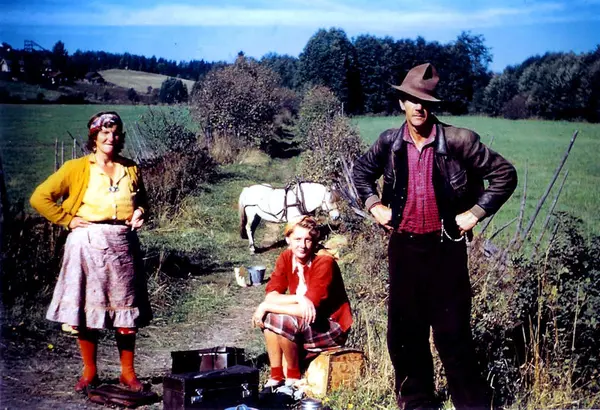-
Travelers in front of a car and tent. Foto: Anno Glomdalsmuseet
The Tater people travelled to find new markets for their goods and craft services. They usually had certain places where they would settle down for short periods. Many had permanent winter places, or they sought shelter on farms (in outbuildings or barns) or in boathouses, old huts or posting stations.
During summer, they settled on plains, coves, islets, and open spaces where there was clean running water.
In the 1920s, they began using tents in the summer months. In the 1960s, the caravan became common. Unlike other itinerants in Norway, the Tater/Romani people travelled with their entire family.
Today, most Tater people are settled, but they are often on the move by caravan, or by boat in the summer, because, as they say: "When spring comes, our blood stirs."
- 1/1
Gustav and Sofie Fredriksen with their daughter Karoline, 1947. Foto: Privat / Anno Glomdalsmuseet




